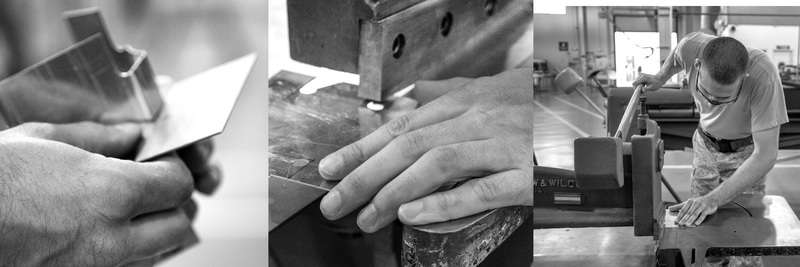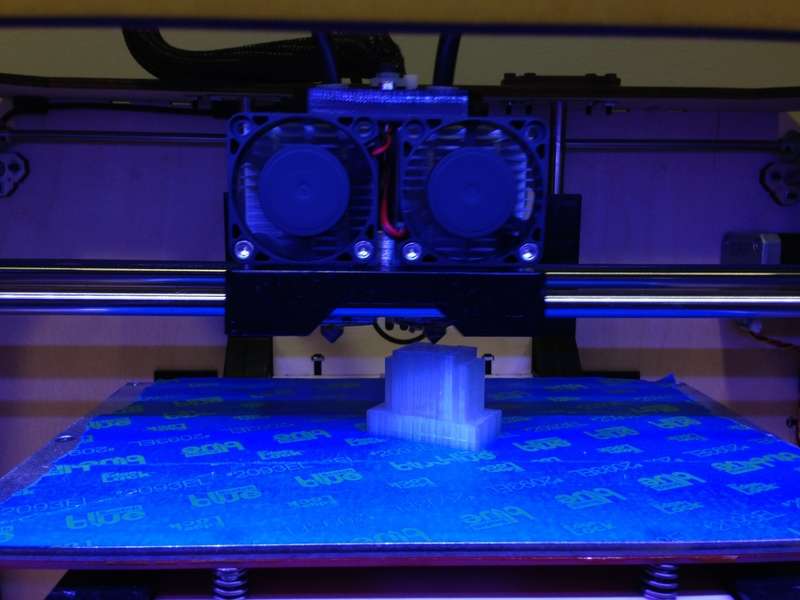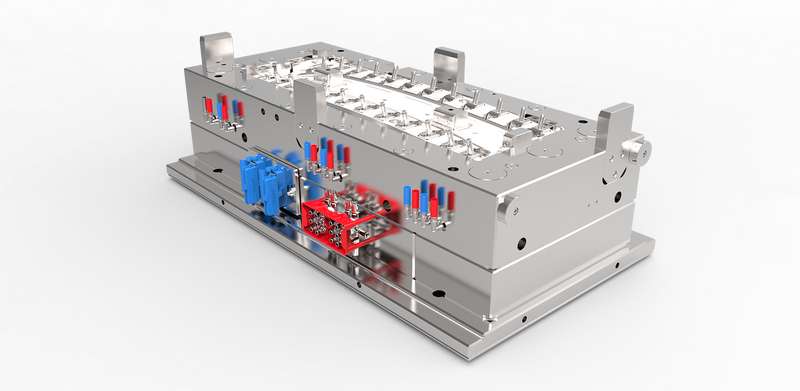When you think what new can a PCB fab house offer – PCBway pulls something new and exciting out of the sleeve. Recently they have introduced a rapid prototyping manufacturing. This is way beyond PCB fabrication because prototyping covers CNC machining, sheet metal fabrication, 3D printing and even injection moulding. So not you can get PCB and take care of mechanical parts such as enclosures and dynamic components.
CNC machining
CNC machining allows milling complex parts out of raw material using programmed tools. CNC service includes milling, lathe, laser machine, water jet machine, electric discharge machine – all that may be needed to cut complex 3-dimensional parts.

While other CNC technologies are used to cut raw material, the main work is performed by CNCN milling and CNC turning.
- CNC milling uses a router bit and 3-axis system to move it around the workpiece. More complex parts may be prepared by using up to 6-axis system.
- CNC turning is used when the part needs to be symmetrical around a single axis. The workpiece is rotated, and two axis-controlled blade removes material from workpiece until the piece is finished.
Sometimes multiple milling technologies are incorporated to produce complex parts.
CNC machining is robust because once CAD files are prepared and loaded, the machine can produce multiple parts quickly. PCBway claims that in many cases, the part can be accomplished within a single day.
The computerized machine can reach up to +/-0.005″ accuracy depending on the materials used. Materials can be from over 50 types, including metal and plastic. The main drawback is that CNC machining will not reduce the cost even at a large scale, because each process takes significant time. Take a look at more CNC options here.
Sheet metal fabrication
In most cases, sheet metal fabrication is used when making enclosures chassis or carcass. Sheet metal manufacturing is fast and easy. They have to prepare press and cutting forms, and then there is no limit on how many parts to make. They can produce from single to unlimited sheet metal parts in a short time. Pieces are created by cutting, stretching, bending and shaping.

Everything starts with CAD files that are converted into machine code. They are capable of performing PEM inserts and welding if necessary. Sheet metal forms are cheap, durable and cost-effective.
Finished products can be finished using anodizing, plating, powder coating and painting.
However, like with CNC, there may be structural limitations such as interlockings and complex wholes. Check out the full list of metal sheet manufacturing.
3D printing
What cannot be done with CNC or metal sheet, 3D printing is a way to go. The 3D printer builds structures layer by layer, this way very complex structures can be made – even with invisible internal geometry. PCBway is capable of 3D printing materials such as powdered metals and plastic. Depending on the materials used, there are several 3D printing technologies used:
- FDM (Focused Deposition Modeling) is when 3-axis nozzle deposits moulted material layer by layer simultaneously cooling it. Once one layer is cooled, another is advanced. The process is repeated until all part is finished. The process is relatively slow and requires precise calibration.
- SLS (Selective Layer Sintering) is usually used on powdered metal when the powder is spread on the upper layer of a part, and the laser beam heats the parts where bonding is needed. Once one layer is complete, one layer is lowered, and another iteration is started.
- SLA (Stereo Lithography Apparatus) – part emerges from the liquid tank, where the photosensitive resin is activated by the laser beam. Scanning area quickly solidifies and turning into plastic.

The main advantages of 3D printing are that parts can be almost any complexity. There is no need to set up machinery (at least the initial process is not complicated). So, it is print on demand process. Modern 3D printers are fast, but still like the CNC process take time. However, noncomplex parts can be manufactured within hours. The method is cost-effective since no materials are wasted during the process.
The main drawback with 3D printing is that there are limited materials, mainly metal powder and plastic. In most cases, parts require post-processing to remove layered structure feel. It is hard to manufacture large volumes due to process speed limitations.
But on the other hand, you have total freedom, how your pard may look like. Take a look at PCBWay 3D printing capabilities here.
Injection moulding
Injection moulding allows manufacturing plastic parts by pressing hot plastic into moulds and achieving high precision and large volumes of pretty complex parts. Usually, injection moulded parts are used for enclosures. Most of the electric tools such as drills, jigsaws and other pieces with plastic enclosures are injection moulded.

Once set up, injection moulding is a very rapid process which consists of four necessary steps:
- Clamping – when two sides of the mould are clamped;
- Injection – hot plastic injected into the mould;
- Colling – plastic part cools to retain its shape;
- Ejection – the part is removed from the mould.
The main advantages are that there can be many types of plastic used for injection moulding. The process allows for manufacturing large quantities of parts. Parts are equally accurate, and a once the mould is built, They can be made on-demand. Moulded parts usually don’t require a complex surface finish.
The main disadvantage of plastic moulding is that it takes time to build moulds, and thus the initial cost for small bathes is higher. Take a look at injection moulding capabilities at PCBway here.
Ordering any of prototyping is fast and easy. All you have to do is go to the instant quote form, select your desired rapid prototyping technology, attach CAD file, and start ordering.





